Nail Clubbing – Overview
Nail clubbing is a change in the structure of fingernails or toenails in which the finger and nail take on the appearance of an upside-down spoon, and become red and sponge-like. Clubbing is a medical condition first described by Hippocrates in which the fingers (and/or toes) have the appearance of upside-down spoons. It is caused by a build-up of tissue in the distant part of the fingers (terminal phalanges), that causes the end of the fingers to become enlarged and the nails to curve downward.
In addition to a change in the angle of the nail and nail bed, the nails may become sponge-like and soft, and have a reddish discoloration. The “growth” in the digits appears to occur both laterally; from side to side, and longitudinally; lengthwise along the fingers. The medical term used to describe clubbing is hypertrophic osteoarthropathy.
Stages of Nail Clubbing
Stage 1: In the initial stage, there occurs peri-ungual erythema and softening of the nail bed. On palpation, it gives a spongy sensation.
Stage 2: In the second stage, an increase in the normal 160° angle between the nail bed and the proximal nail fold occurs, resulting in convexity as the nails grow. Eventually, the depth of distal phalanx increases and the distal interphalangeal joint may become hyper-extensible. At this stage, finger develops a clubbed appearance.
Stage 3: Finally, the nail and peri-ungual skin appear shiny and nail develops longitudinal ridging.
This whole process usually takes years but in certain conditions, clubbing may develop sub-acutely (e.g. lung abscess, empyema thorasis). Although different grading of clubbing has been described, it has no clinical significance.
Pathophysiology of Nail Clubbing
Though many theories had been proposed, the exact pathology of nail clubbing remains unknown. Different pathological processes may follow different pathways to a common end. Beginning with increased interstitial edema, which results in alterations in size, composition, and configuration, lastly to the formation of the clubbed digit. Distal digital vasodilation is the prime common factor in most types of nail clubbing that sources increased blood flow to the distal portion of the digits. This vasodilation may be due to circulating or local vasodilator, neural mechanism, hypoxia, genetic predisposition, other mediators or a combination of these factors.
In a recent study, platelet-derived growth factor released from fragments of platelet clumps or megakaryocytes has been proposed as the responsible factor for finger clubbing. Growth-promoting activity given away by this factor causes increased capillary permeability and connective tissue hypertrophy.
Another proposed theory is of neural mechanism on special attention to the vagal system since the regression of clubbing after vagotomy has been reported. Genetic inheritance and predisposition also may play a role in clubbing and may be one of the possible causes of nail clubbing.
Nail clubbing is a presentation of an underlying problem. Hence, it is important to seek medical advice, if such nail changes are noted. Timely treatment can help to control nail clubbing and also provide proper treatment for the underlying cause.
What are the causes and risk factors of nail clubbing?
While many physicians think first of lung causes when they encounter people with nail clubbing, there are a number of potential causes. These fall into a few categories:
Idiopathic
This is a category in which clubbing occurs for no obvious reason, and is not of any concern medically: it just is.
Inherited Trait
There are a few ways that clubbing can be inherited. Most often the trait is inherited in an autosomal dominant fashion, meaning that if one of your parents carries the trait, there is a 50:50 chance that you will also inherit the trait.
Secondary clubbing
Secondary clubbing refers to clubbing that occurs in association with a medical condition. Conditions which are commonly associated with clubbing include:
- Lung cancer: Clubbing is a sign found in around 29 percent of people with lung cancer, and is the most common cause of clubbing (responsible for around 90 percent of cases). It is much more common with non-small cell lung cancer than with small cell lung cancer.
- Other cancers: Other cancers, especially Hodgkin’s disease, may be present with clubbing.
- Lung conditions: Some lung conditions associated with clubbing include bronchiectasis, interstitial lung diseases such as idiopathic pulmonary fibrosis, empyema, pulmonary tuberculosis, and cystic fibrosis.
- Congenital heart disease: Heart disease that is present from birth, especially “cyanotic heart disease” such as tetralogy of Fallot, are frequently accompanied by clubbing.
- Gastrointestinal conditions: Some conditions in this category associated with clubbing include celiac sprue, cirrhosis, Crohn’s disease, and ulcerative colitis.
- Endocrine problems: Hyperthyroidism, especially Grave’s disease may be accompanied by clubbing.
The underlying process behind clubbing is still not understood. Scientists feel it may be related to platelet-derived growth factor and vascular endothelial growth factor although the precise mechanism is not known.
What are the symptoms might occur with nail clubbing?
Nail clubbing may accompany other symptoms, which vary depending on the underlying disease, disorder or condition and may also involve the respiratory, cardiovascular or gastrointestinal systems.
Respiratory system symptoms that may occur along with nail clubbing
- Nail clubbing may accompany other symptoms that affect the respiratory system including:
- Coughing up blood (hemoptysis)
- Coughing up clear, yellow, light brown, or green mucus
- Cough that gets more severe over time
- Difficulty breathing
- Loose, wet cough that produces thick white or yellow phlegm
- Rapid breathing (tachypnea) or shortness of breath
- Wheezing (a whistling sound made with breathing)
Cardiovascular system symptoms that may occur along with nail clubbing
Nail clubbing may accompany symptoms related to the cardiovascular system including:
- Bluish lips, nails or skin (cyanosis)
- Chest pain or pressure
- Irregular heart rate (arrhythmia
- Rapid heart rate (tachycardia)
- Squatting posture in young children
Gastrointestinal symptoms that may occur along with nail clubbing
Nail clubbing may accompany symptoms that are related to the gastrointestinal system including:
- Abdominal bloating
- Abdominal pain or cramping
- Abnormally foul-smelling stools
- Blood-streaked stools
- Chronic or persistent diarrhea
- Indigestion
- Loss of appetite
- Nausea with or without vomiting
- Unexplained weight loss
Serious symptoms that might indicate a life-threatening condition
In some cases, nail clubbing can be a symptom of a life-threatening condition. Seek immediate medical care if you, or someone you are with, have any of these life-threatening symptoms including:
- Bluish coloration of the lips or fingernails
- Change in level of consciousness or alertness, such as passing out or unresponsiveness
- Rapid heart rate (tachycardia)
- Respiratory or breathing problems, such as shortness of breath, difficulty breathing, labored breathing, wheezing, not breathing, or choking
Complications of Nail Clubbing
Since clubbing is a clinical finding, no direct complications occur, except for cosmetic concerns. The complications of the underlying disease resulting in clubbing may be numerous considering the wide spectrum of diseases that are associated with clubbing.
Patients with hereditary hemorrhagic telangiectasia may have developed pulmonary arteriovenous malformations, which may induce clubbing, cyanosis, and other findings, possibly leading to complications such as stroke or brain abscess if untreated.
How Nail Clubbing is diagnosed?
Most often, clubbing is noted on a physical exam and is expected based on other findings (such as the presence of lung disease or cancer).
Diagnosis
Clubbing is often obvious, but when subtle, other findings and measurements may be done to confirm the diagnosis. These include:
- Lovibond’s profile sign: The angle between the base of the nail and the nail itself
- Distal/interphalangeal depth ratio
- Schamroth’s sign: Lack of a window (gap) between the fingers, when the digits from each hand are placed together with the top of both hands touching.
Differential Diagnosis
Some rheumatoid conditions, such as reactive arthritis (Reiter’s syndrome), can mimic the appearance of digital clubbing.
Diagnostic Tests When Clubbing Is Found: If your doctor notes you have clubbing, or if you bring up this concern to your doctor, the first thing she will do is ask you about your family history to determine if it may be a hereditary trait. She will then do a careful history and physical exam, keeping in mind the possible causes associated with secondary clubbing. Some tests, depending upon your symptoms, may include:
- A CT scan of your chest and/or other studies to look for lung cancer as well as other lung and heart-related conditions.
- An EKG and/or echocardiogram to evaluate your heart.
- Arterial blood gases and/or pulmonary function tests to evaluate your lung function and look for underlying lung diseases.
- Blood tests, such as liver function tests and thyroid function may be suggested.
Treatment of Nail Clubbing
Though treatment of the underlying pathological condition may decrease the nail clubbing, there is no specific treatment for this disorder. Studies show that some patients respond well to Etoricoxib (Arcoxia), a non-steroidal, anti-inflammatory drug called NSAIDs. It soothes the pain and swelling associated with nail clubbing and is taken once a day on a full stomach. This should be used under doctor’s guidance only as so many side effects and contraindications have been observed during its use.
Some natural remedies are also in practice to soothe the sufferings of nail clubbing. These conservative treatments are:
- Application of warm olive oil.
- Soaking clubbed nails in a mixture of tomato juice or lemon juice.
- Soaking clubbed nails in a mixture of 3 tablespoons of olive oil and one tablespoon lemon juice.
- Sliced lemons rubbed over the nails in a 5 minute period also promote natural nail growth.
- Consumption of foods rich in gelatin such as jellies can also be a cure as well.
- Consumption of vitamin E rich foods like green leafy vegetables etc. on a regular basis.
- Drops of tea tree oil on the nail beds as well as the use of essential oils for massaging the nails.
- Salt water treatment for 5 minutes on the nail beds
- No cutting of cuticles.
Can Nail Clubbing be prevented?
The only way to prevent clubbing is by taking steps to prevent and manage the underlying conditions that cause it. For example, you can:
- Reduce your risk of lung cancer by avoiding tobacco smoke and limiting your exposure to toxins in the workplace
- Lower your chances of developing bronchiectasis by getting vaccinated against measles and whooping cough, seeking prompt treatment for lung infections, and limiting your contact with tobacco smoke and other toxins
- Prevent asbestosis by using protective equipment when you’re working in an industry, such as construction, where you might be exposed to asbestos
If you’ve been diagnosed with lung disease, follow your doctor’s recommended treatment plan. That may help you maintain your blood oxygen levels and prevent clubbing.
 Diseases Treatments Dictionary This is complete solution to read all diseases treatments Which covers Prevention, Causes, Symptoms, Medical Terms, Drugs, Prescription, Natural Remedies with cures and Treatments. Most of the common diseases were listed in names, split with categories.
Diseases Treatments Dictionary This is complete solution to read all diseases treatments Which covers Prevention, Causes, Symptoms, Medical Terms, Drugs, Prescription, Natural Remedies with cures and Treatments. Most of the common diseases were listed in names, split with categories.
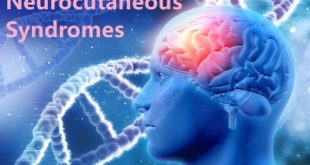
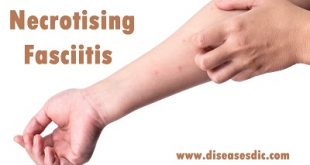
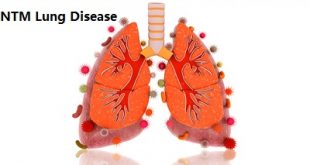
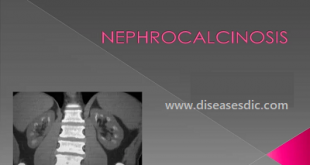
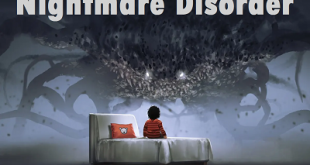

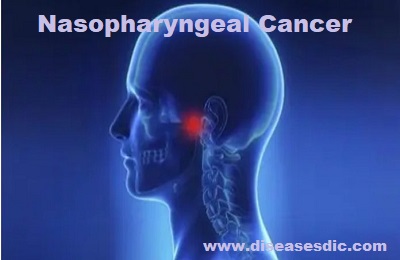

Thank you so much,i hope this will help me